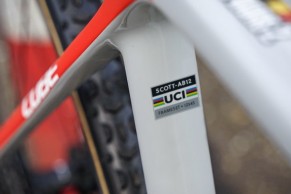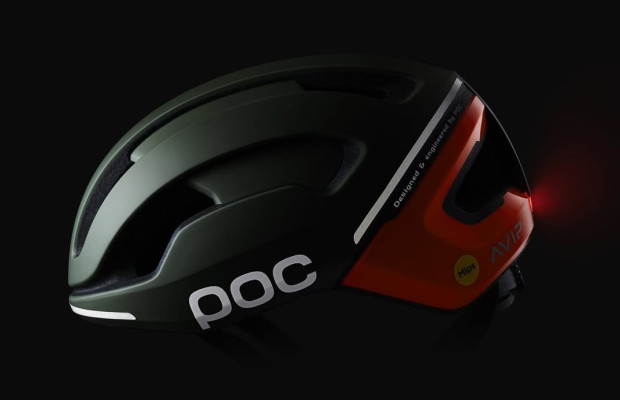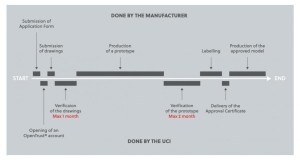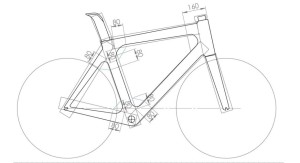What happens if your bike doesn't have a UCI sticker?
Everyone has noticed the sticker with the UCI logo that most road bikes display on their seat tube. However, few know what its purpose is and the implications of a frame not having it. A system that the highest body of cycling introduced to ensure compliance with technical regulations regarding the characteristics that bicycles must have for their use in competition.

This is how bikes are approved for competition use
In 2011, the UCI introduced its bicycle approval system aimed at road, track and cyclocross models. With this, the highest body of cycling intended to simplify the process of verifying bicycles before competitions, relieving referees of tasks. In this way, it established a validation system that manufacturers had to follow if they wanted their bikes to be used in competition. Besides, let's not fool ourselves, the UCI thus opened another source of income since, obviously, the entire process of verifying new models carries a cost for the brands, 5,000 Swiss francs plus VAT for the complete process and 3,500 Swiss francs plus VAT with the simplified procedure.
Therefore, since the UCI introduced this system, if we want to participate in any federated competition of these modalities, our bike must display the mentioned sticker, unless our bike is from before 2011, in which the UCI logo and a code that identifies the model is shown and we can consult in the list that the highest body publishes each season and that, on many occasions, serves to advance the launch of new models by the brands.
RECOMENDADO

Tips for cycling in the rain

25 cycling gifts ideas to get it right

When do helmets have to be changed? Do they have an expiration date?

Some reasons to stay away from the road in winter

The best apps for cycling and mountain biking

Black Friday 2025 cycling bargains: save on Garmin, POC, Maxxis and more

Obviously, if our frame is not included among the approved ones and we are subjected to a random inspection by the competition referees in which we are going to participate, they will not allow us to start. In any case, almost all current models go through this process, except for some first price models and little else. In fact, it serves brands to ensure that their new bicycles can be used in competition and not find that, after developing a model then their cyclists cannot use it as, for example, happened in the past with those Cannondale prohibited for not reaching the minimum weight set by the UCI.
There are two procedures to approve new bike models, the general and the complete procedure. The first is a simplified method that is used with more conventional models and that only requires the brand to send the bike designs to the UCI for it to grant its approval after verifying that they comply with the current technical regulations.

On the other hand, the complete procedure is followed by monocoque frames and aerodynamic cut that must adhere to the design limits set by the UCI for these bikes. In this case, in addition to the designs, manufacturers are also asked to submit a prototype of the bike for the UCI to carry out its own measurements and verifications.
In essence, the UCI seeks to maintain that bicycles continue to maintain their traditional essence with a double triangle design without deriving towards models like those we can see in long distance triathlon tests. To do this, it defines each segment of the frame: horizontal tube, diagonal tube, etc... with a rectangle that limits what each tube can occupy at most as well as the union areas so that the transitions are smooth and that have been taken advantage of by manufacturers to optimize the aerodynamics of new models.

In addition, other parameters are delimited such as the inclination of the seat stays, the design of the forks, especially in time trial models; the width of the tubes or the need to comply with certain dimensions.